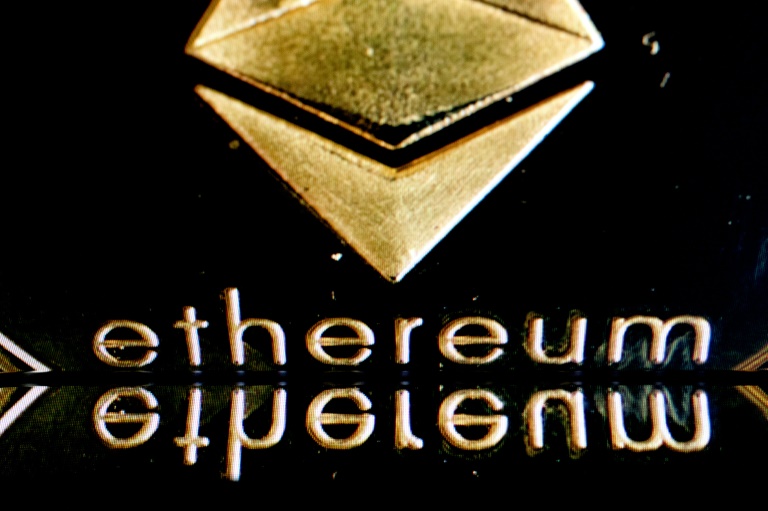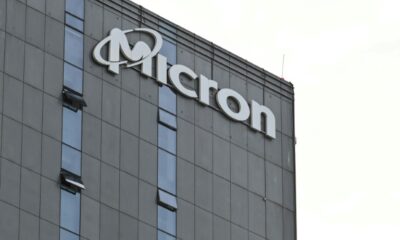Bitcoin has captured the limelight in recent weeks as it surged to a new record high, yet another major cryptocurrency, Ether, has been enjoying its own meteoric rise.
Launched in 2015, Ether, also known as Ethereum, is by far the second-largest digital currency in terms of total value, now estimated at over $460 billion.
Along with other cryptocurrencies including Solana and Dogecoin, it benefited from the regulatory approval in the United States of a new bitcoin investment product, the exchange traded fund — or ETF — in mid-January, said James Butterfill of the investment company CoinShares.
These ETFs allow investors to profit from any change to the price of cryptocurrencies without having to buy them directly, while also letting them sell at any time.
The launch of crypto ETFs has led to an influx of new money, sending bitcoin to a fresh record on Friday of $70,085.
Bitcoin’s rise has been well-documented, but Ether’s has been even more impressive, surging almost 72 percent year to date in comparison to bitcoin’s 61 percent rise.
This strong performance is largely due to “expectations that an Ethereum ETF could be approved in the United States,” according to Dessislava Aubert of research firm Kaiko.
Several asset management companies have applied for authorization from the US financial markets regulator, the Securities and Exchange Commission (SEC), to market these Ether investment products.
The SEC must rule on the first such applications, from VanEck and Ark 21Shares, by May 23 at the latest.
“Ethereum has started to wake up as investors are anticipating a potential approval,” Michael van de Poppe of MN Trading told AFP, adding that “people are rotating from Bitcoin to Ethereum as a potential investment opportunity.”
– Bigger than bitcoin? –
Beyond the ETF effect, the digital currency dreamed up by Russian programmer Vitaly Buterin has several other cards up its sleeve.
For Simon Peters of cryptocurrency exchange eToro, Ethereum is also buoyed by the prospect of “Dencun,” a major upgrade to the technology underlying this digital currency, scheduled for March 13.
This major change will improve transaction processing capacity and cut transaction costs, but also has the potential to unleash the growth of an ecosystem with multiple applications.
“Bitcoin’s primary use is as store of value, while Ethereum has much more potential use cases,” Peters told AFP.
For example, it is the destination of choice for non-fungible tokens — or NFTs — the certificates of digital authenticity that caused such a stir three years ago.
The two cryptocurrencies are not in direct competition, according to van de Poppe from MN Trading, because Bitcoin is “hard money,” while Ether “is basically an investment for the entire blockchain and smart contract ecosystem.”
Ethereum has already successfully negotiated two major technical transformations in recent years, including the switch to a less energy-intensive system in September 2022.
James Butterfill said there is “increasing optimism” that a “Dencun” upgrade will “go without a hitch,” which would reinforce the currency’s credibility.
He added that Ether, by the very nature of its operation, offers the “added benefit” of interest generated by its holders.
The mechanism for creating this currency involves owners putting up existing Ether coins as collateral in a process known as “Proof of Stake,” which differs from bitcoin’s energy-intensive method involving highly complex calculations, known as “Proof of Work.”
Ether investors who agree to put up some or all of their holdings receive a fee of a few percent a year, in addition to any potential capital gain if the currency appreciates in value.
The “Proof of Stake” process adopted in September 2022 has significantly increased the amount of Ether used as collateral, notes Simon Peters, currently at 21 percent compared with just 10 percent 18 months ago.
“There is less Ethereum in circulation,” he said, adding: “If demand increases, given the squeeze in supply, then price should follow.”
“I think that Ethereum is going to be outperforming Bitcoin,” said Michael van de Poppe, adding the total market capitalization of Ethereum could end up exceeding that of bitcoin.

 Business4 months ago
Business4 months ago
 Business5 months ago
Business5 months ago
 Events3 months ago
Events3 months ago
 People4 months ago
People4 months ago
 Events6 months ago
Events6 months ago
















